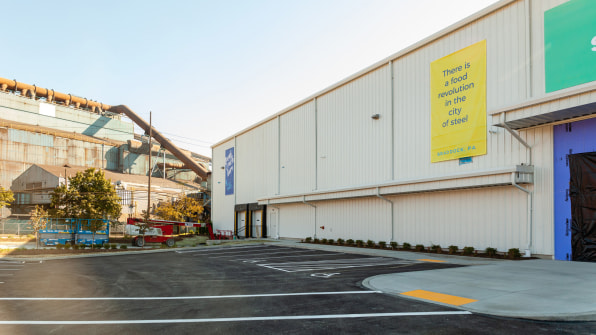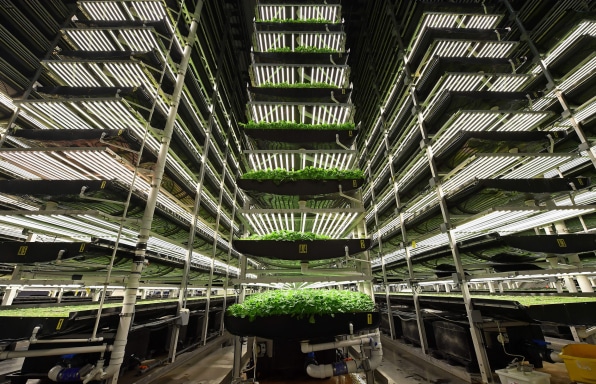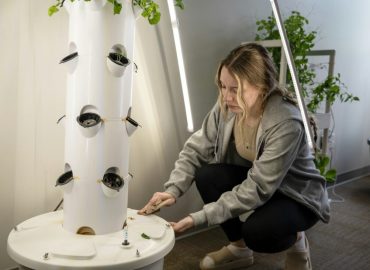Vertical Farming Investment Bubble?

The vertical farming bubble is finally popping
Climate change might make growing produce indoors a necessity. But despite taking in more than a billion dollars in venture capital investment, most companies in the industry seem to be withering, unable to turn a profit on lettuce.
Indoor Farming Investment Bubble | ADELE PETERS |
When workers arrived at Fifth Season, an indoor farm in the former steel town of Braddock, Pennsylvania, on a cloudy Friday morning last October, they expected it would be a normal day.
The farm, which had opened two years earlier, seemed to be running smoothly, growing tens of thousands of pounds of lettuce per year inside a robot-filled 60,000-square-foot warehouse. The brand was selling salad kits—like a taco-themed version with the company’s baby romaine, plus guacamole, tortilla strips, and cheese—in more than 1,200 stores, including Whole Foods and Kroger. Earlier in the year, the company had said that it projected a 600% growth in sales in 2022. The branding was updated in October, and new packages were rolling out in stores. Solar panels and a new microgrid had recently been installed at the building. A larger farm was being planned for Columbus, Ohio.

But the workday never started. “The CEO came in and said, ‘Justin, we gotta talk,’” says Justin Stricker, who had worked as a maintenance technician at the startup since it launched. “He said, ‘Don’t let anyone set up. We’re going to have a big meeting.’ I thought I was getting fired. The whole entire place was just done.” The managers announced that the company was closing immediately. After shutting down the electrical equipment and draining water lines, the plants were left to die. Stricker and dozens of others were left scrambling to find new jobs.
Fifth Season’s failure is only the most dramatic signal of a reckoning taking place in what’s known as the vertical farming sector. AppHarvest, which runs high-tech greenhouses in Appalachia growing tomatoes and greens, said in a recent quarterly report that it had “substantial doubt about our ability to continue as a going concern” unless it could raise more money; the company is currently being sued by investors who argue that it misled them about its viability. AeroFarms, an early pioneer in the space, pulled out of a proposed SPAC deal last year. In the company’s May 2021 investor presentation, AeroFarms, which was founded in 2004, estimated just $4 million in 2021 EBITDA-adjusted revenue—and $39 million in losses.
The litany continues: Agricool, a French company growing greens in recycled shipping containers, went into receivership in January. Infarm, a vertical farming company based in Berlin, recently announced that it was laying off more than half of its workforce—500 workers. IronOx, which built a complex robotic system to run its indoor farms, laid off nearly half of its staff.
If these tremors in the vertical farming industry seem unsettling, what’s to come could well be worse. As of the beginning of December 2022, $1.7 billion had been invested in indoor growers, more than any other part of ag tech. Investors have been drawn to the idea of “disrupting” a 10,000-year-old industry; when the Vision Fund first invested in Plenty, SoftBank CEO Masayoshi Son said that the company would “remake the current food system.” Controlled indoor agriculture is also seen as a way to respond to climate change. And, of course, investors expect to make money.
Nearly 20 years after the first vertical farm opened, with capital drying up like heads of romaine under an unrelenting California heat wave, one now has to wonder two things: Is it even possible to compete with the economics of outdoor farming? And how did investors think that they could find Silicon Valley-style returns in . . . lettuce?

Image: AeroFarms’ vertical grow towers on February 19, 2019, in Newark, New Jersey. [Photo: Angela Weiss/AFP/Getty Images]
HOW EXPENSIVE IS IT TO GROW GREENS? LET US COUNT THE WAYS
In theory, there are enormous benefits to indoor farms. They often use 90% less water than traditional farms; right now, most lettuce in the country is grown in drought-stricken California and Arizona. Growing inside can avoid outbreaks of E. coli and diseases like a plant virus that recently devastated lettuce grown in California’s Salinas Valley, pushing up prices. Indoor farming also eliminates pesticides and reduces fertilizer and keeps it out of rivers. Lettuce grown near Boston or New York City can avoid traveling thousands of miles from Western fields, saving gas and staying fresh longer. It’s possible to grow delicate, flavorful foods that otherwise wouldn’t survive a long trip through the supply chain. And as climate change makes extreme heat, drought, and flooding more likely, growing inside could become a necessity for some crops.
But in practice, you end up with a head of lettuce that must bear many costs. Farms in warehouses—which typically have multiple layers of plants stacked toward the ceiling in each row, which is why they’re often called vertical farms—are expensive to build and run. Fifth Season, for example, reportedly spent $27 million on its Braddock farm, which could produce around 4 million salads a year. AeroFarms told investors that its Model 5 farm design would cost $52 million but the cost would drop to $43 million for its planned Model 7, which it projected for September 2023. Plenty—a Bay Area-based vertical farming startup founded in 2014 and which raised $941 million to date from investors, including SoftBank Vision Fund 1—has said it plans to spend $300 million on a new facility outside Richmond, Virginia. “You have depreciation before you’ve started running the operation and trying to make that compete with outdoor-grown product,” says Peter Tasgal, an agricultural consultant who works with vertical farms.
Lights alone are expensive. “Plants require about five to 10 times more light than we do as human beings,” says Eric Stein, a business professor at Penn State University and head of the nonprofit Center of Excellence for Indoor Agriculture, who studies the economic model of indoor farms. Vertical farms often start growing leafy greens first because they require less light than some other crops, but buying the lights, and paying the electric bill, is still a significant expense. Even a small, 10,000-square-foot farm might have a lighting bill over $100,000 or even $200,000 a year, he says. Running air conditioners and other equipment adds to the energy used.
Adding renewable energy outside can help—and reduce the carbon footprint that goes along with that energy use—but putting a few solar panels on the roof can’t cover the total amount of electricity needed. “In a typical cold climate, you would need about five acres of solar panels to grow one acre of lettuce,” says Kale Harbick, a USDA researcher who studies controlled-environment agriculture. A hypothetical skyscraper filled with lettuce would require solar panels covering an area the size of Manhattan.
Fully indoor warehouse farms—where plants live under the purple glow of LED lights, with no natural light— are relatively new, spurred both by growing concern about the environment and market changes like the falling cost of LED lights (brought on, partially, by the growing marijuana industry). But the broad concept is not as radical as some investors may have wished: More traditional greenhouses already grow a large percentage of the tomatoes eaten in the United States, for example (most come from Mexico and Canada). In the Netherlands, greenhouses grow nearly a million tons of tomatoes a year, along with other crops, making the country a major food exporter despite its tiny size.
Many startups in the space tout the fact that they’ve built their own complex technology to operate the farms, including software that uses computer vision and artificial intelligence to monitor the plants and tweak lights, temperature, humidity, and other factors to optimize growth. (Almost every company makes the argument that it’s found a unique tech solution to lower cost.) Custom robotic systems can plant seeds, move trays of plants, and harvest crops. But when companies each build their own technology, expenses balloon.
“There are many reasons why they’re doing it, but one of the reasons is because they know that Silicon Valley investors won’t invest in a farm, but they’ll invest in a tech company,” says Henry Gordon-Smith, founder of Agritecture, a firm that consults on urban farming projects. “In reality, these companies overspend on R&D by crazy amounts, and then say, ‘Oh, shit, that didn’t work.’” Startups often later incorporate more outside tech, he says, but keep the narrative that they’ve designed a full system from scratch.
Read the Entire Original Article Here: https://www.fastcompany.com/90824702/vertical-farming-failing-profitable-appharvest-aerofarms-bowery
The post Vertical Farming Investment Bubble? appeared first on GROZINE.


